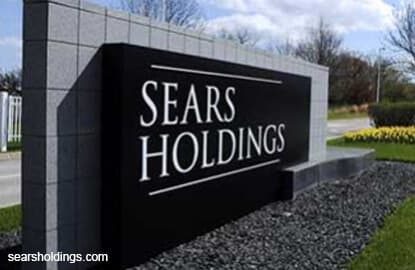
(March 23): That retail stocks face an ever-dimmer future is now something of an investing truism.
That the internet retailers which are displacing them are also vulnerable to many of the same forces is also true, but much less well understood.
Shares in Sears Holding Corp tumbled as much as 15% on Wednesday after the once-ubiquitous retailer said that "substantial doubt exists related to the company's ability to continue as a going concern."
While some of Sears, and indeed any company’s, problems are idiosyncratic, the simple narrative of internet displacement is both substantially true and gaining velocity.
Clothing retailer Gap Inc is down more than 23% since November, outdoor specialist Cabela’s is down about 30% and many others have been similarly hit.
Companies that own or invest in malls are also on the slide. HHGregg Inc and RadioShack have filed for bankruptcy in recent months.
All trace their problems, in significant part, to pressures brought on by internet retailing, which makes price competition more intense, requires new systems and processes which traditional retailers have been slow in implementing, and which make physical stores a heavier relative cost and declining source of sales.
All this is true, and retail does face a diminished, and diminishing, future, but it is not safe to extrapolate that once the Amazons of the world have displaced retail that history will end. These internet-oriented companies, to varying degrees, are vulnerable to the very forces which allowed them to gain market share from brick-and-mortar retailers.
The very fact that customers are acquired, and retained, digitally, and that a company need not rely simply on those in its geographic area means that internet retailers, having seen off those which principally sell through stores, will face a state of constant and heightened competition unprecedented in investment history.
There is a case that Amazon and certain other very large internet retailers will have an effective defensive moat through the sheer application of scale and technology to their distribution and fulfillment functions. That process of investment to stay ahead may never slow, much less end, thus precluding the expected massive profits down the road.
This implies lower margins, not the big increase in profits some expect once the bricks-and-mortar types have been cut down to size.
OVERPRICED NEW-AGE STOCKS?
None of this is to say that internet retailers such as Amazon or eBay are over-priced at levels they currently trade, only that applying the kinds of assumptions about client stickiness to them that we would have to Sears in 1990 would be very foolish.
Steef Bergakker, a portfolio manager at Dutch asset manager Robeco, has done a study which finds that high multiples for stocks are justified in the “vast majority of cases.”
He makes the good point that comparing an individual stock’s price-earnings multiple to the market as a whole is meaningless, because stock p/e ratios follow a life cycle, starting high during periods of strong growth and settling into a more tepid middle age.
But paying a high multiple only makes sense when returns on incremental investments are particularly high, the market it can serve is particularly big, or its competitive advantage will last an unusually long time.
“The longer a competitive advantage lasts, the higher the justified multiple,” Bergakker writes. “The competitive advantage period is a function of the nature of the competitive advantage; industry characteristics; and management’s agility to create and capture strategic options for new growth initiatives.”
This is exactly what worries me about internet-based retailers, indeed about the future of investing in a more digitized world generally. Our sense of proportion about how long the income stream from a given competitive advantage may last has been conditioned by decades of stable growth and displacement in many industries, and not just retail.
There are two aspects to this:
One, that the world may just have become more competitive now that geography matters less in retail and other distribution. That may allow for new competitors to spring up, or more likely, to pin incumbents like Amazon down towards forever plowing the lion’s share of its profits into defensive investment in better technology and processes. Shareholder payouts may be thin on the ground, and multiples ultimately suffer.
Second, the pace of technological change may have sped up, or may increase further, which would make existing franchises of less value and more vulnerable.
In the brave new world all companies may be Sears and Radio Shack.
The opinions expressed here are those of James Saft, a columnist for Reuters.